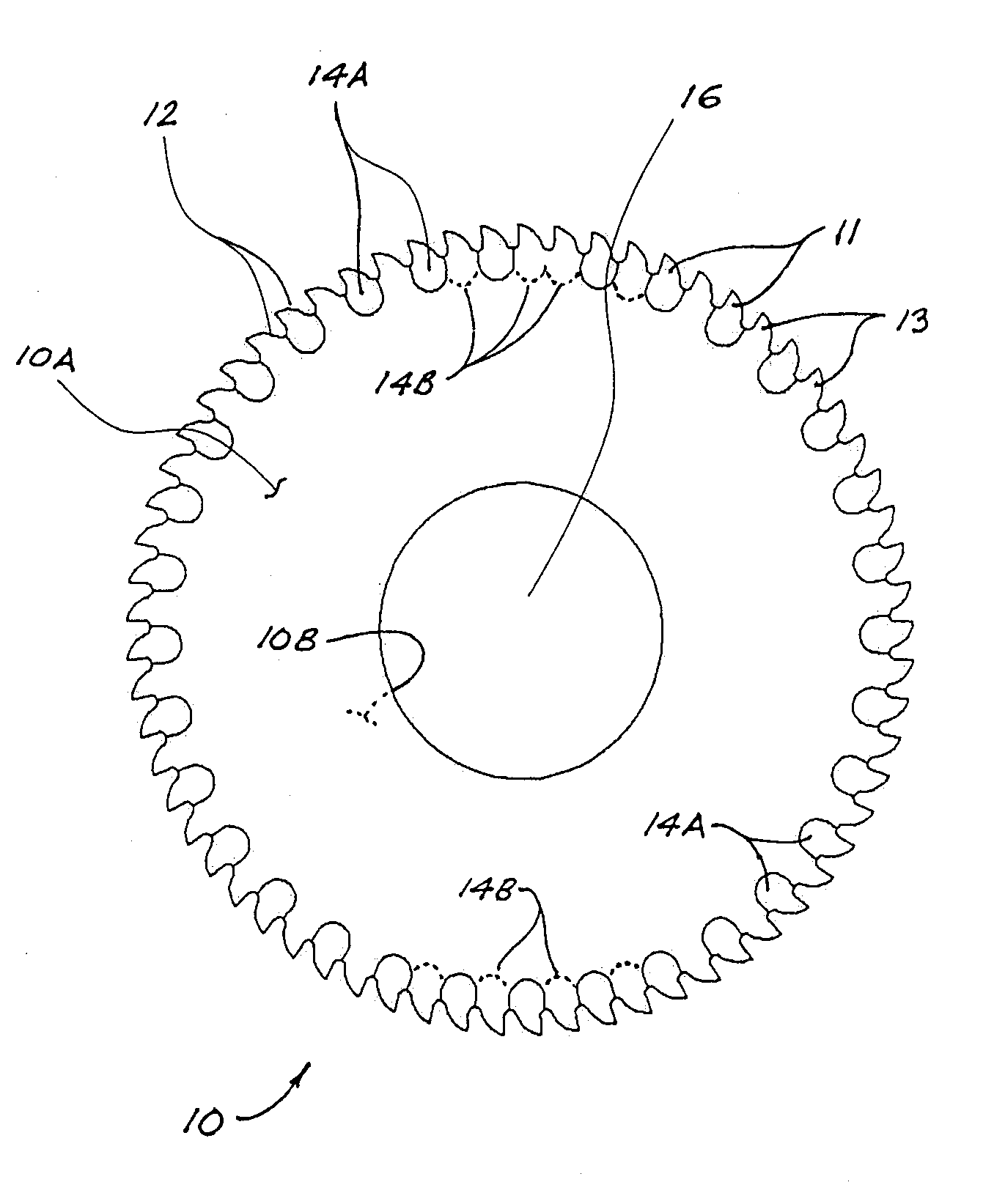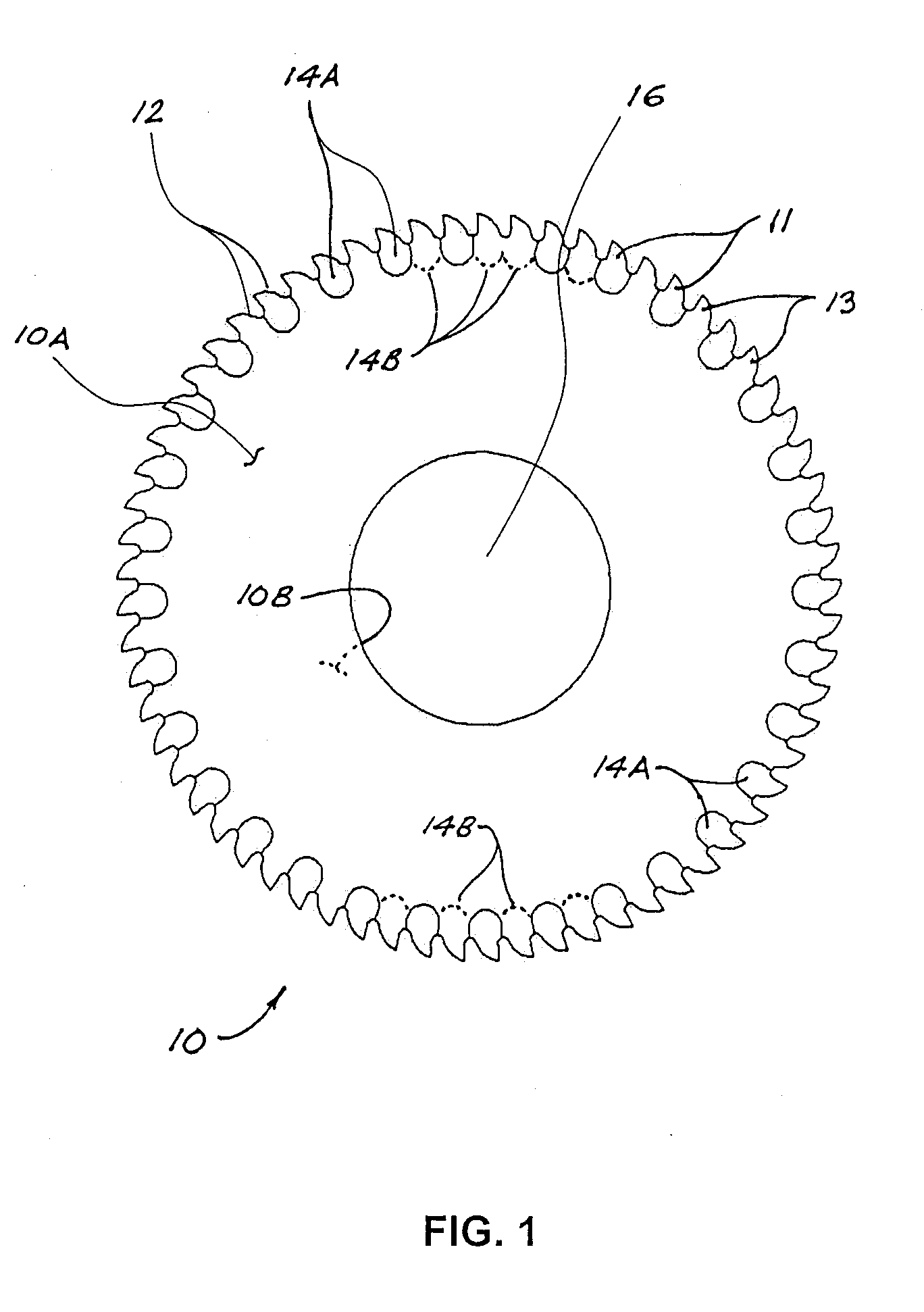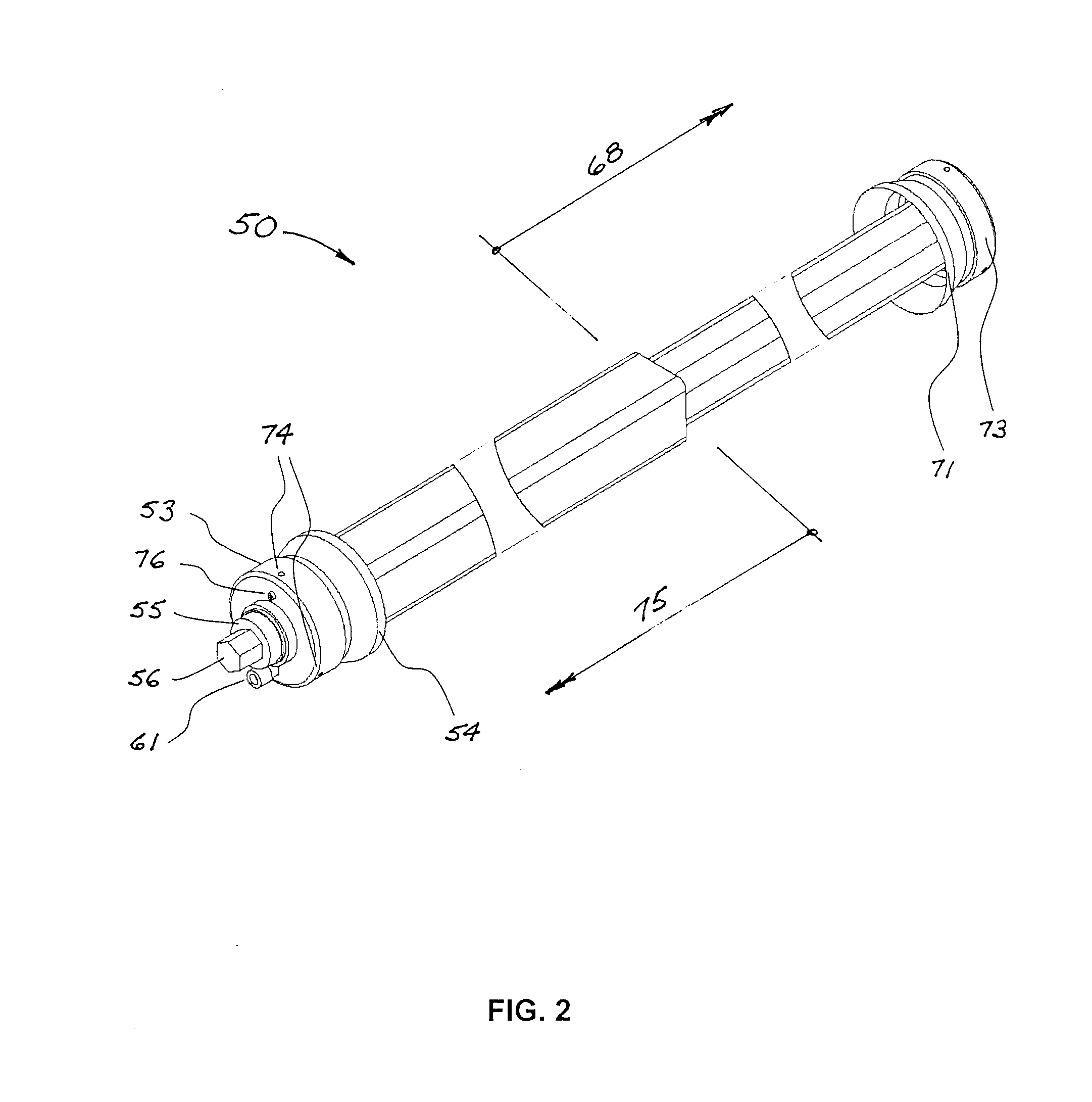Method and apparatus for slotting tubular steel
a tubular steel and slotting blade technology, applied in band saws, manufacturing tools, saw chains, etc., can solve the problems of not being able to effectively remove all wickers, no prior art has been identified which addresses chip clearing, and the control of the chip geometry and the chip-clearing ability of the slotting tool, etc., to achieve the effect of improving the geometry of the slotting blade and improving the slotting efficiency
- Summary
- Abstract
- Description
- Claims
- Application Information
AI Technical Summary
Benefits of technology
Problems solved by technology
Method used
Image
Examples
Embodiment Construction
[0031]FIG. 1 illustrates an embodiment of a circular blade 10 in accordance with a first aspect of the present invention, particularly adapted for uses such as slotting tubular steel. Blade 10 has a central arbor opening 16, for mounting blade 10 on the rotatable arbor of a slotting machine, plus a plurality of generally curvilinear teeth 12 arrayed around the circumference of blade 10. Blade 10 has a first face 10A (shown in FIG. 1) and an opposite second face 10B. The thickness of teeth 12 is less than the thickness of blade 10, such that each tooth 12 has both an inner face 11 and an outer face 13, with each outer tooth face 13 being flush with either first face 10A or second face 10B of blade 10, and with outer tooth faces 13 being alternatingly flush with first face 10A and second face 10B from one tooth 12 to the next. This feature has the effect of reducing the width or thickness of metal chips or cuttings that teeth 12 cut from tubular steel workpieces (or other metal workpi...
PUM
| Property | Measurement | Unit |
|---|---|---|
| width | aaaaa | aaaaa |
| thicknesses | aaaaa | aaaaa |
| width | aaaaa | aaaaa |
Abstract
Description
Claims
Application Information
 Login to View More
Login to View More - R&D
- Intellectual Property
- Life Sciences
- Materials
- Tech Scout
- Unparalleled Data Quality
- Higher Quality Content
- 60% Fewer Hallucinations
Browse by: Latest US Patents, China's latest patents, Technical Efficacy Thesaurus, Application Domain, Technology Topic, Popular Technical Reports.
© 2025 PatSnap. All rights reserved.Legal|Privacy policy|Modern Slavery Act Transparency Statement|Sitemap|About US| Contact US: help@patsnap.com



